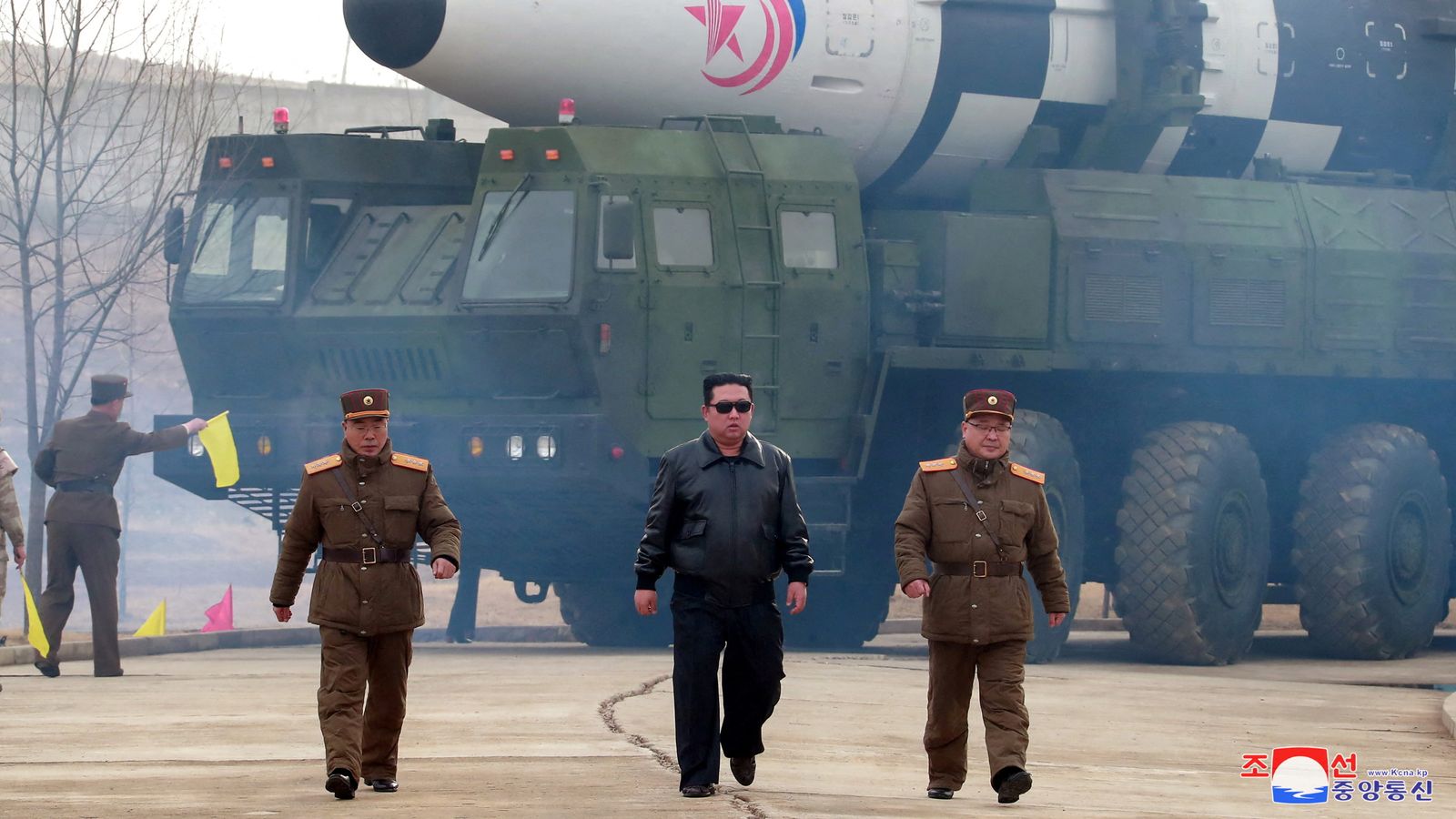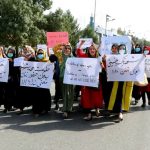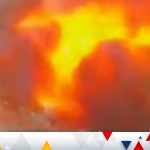North Korea has confirmed it tested its biggest intercontinental ballistic missile, under the supervision of Kim Jong Un.
He was present during the launch and was pictured smiling and clapping as he watched on from an observation deck.
State media said on Friday the launch of the Hwasong-17 was directly guided by the North Korean leader.
It said the country would continue to develop a “nuclear war deterrent” while it prepares for a “long-standing confrontation” with the US.
On Thursday, Japan’s coast guard said that North Korea had launched the projectile, South Korea branded the launch a “clear violation” of UN Security Council resolutions.
The “new type” of ICBM is reportedly the biggest in North Korea to date and marks an end to a self-imposed ban on long-range testing, which has been in place since 2017.
The missile reportedly flew for 677 miles (1,090km) to a maximum altitude of 3,882 miles (6,248km) and hit a target in the sea between North Korea and Japan.
North Korea’s rocket launch a ‘clear violation’ of UN resolutions – prompting South Korea to fire multiple missiles
South Korea reportedly fires warning shot at North Korean ship as Pyongyang ramps up nuclear testing
North Korea fires ballistic missile, neighbours say
The rocket, which was revealed during a military parade last year, could reach targets 9,320 miles (15,000km) away when fired on a normal trajectory, which would place mainland US within striking distance.
The North Korean leader ordered the launch in part due to the “daily escalating military tension in and around the Korean Peninsula” and the “long-standing confrontation with the US imperialists accompanied by the danger of nuclear war”, state-run news agency KCNA said.
It quoted him as saying the new weapon would make the “whole world clearly aware” of North Korea’s nuclear capabilities and reported that he vowed his military will acquire “formidable military and technical capabilities unperturbed by any military threat and blackmail”.
The Hwasong-17 is the largest liquid-fuelled missile ever launched by any country from a road-mobile launcher, analysts said, adding North Korea’s aim is to force the US to accept it as a nuclear power and remove sanctions that have crippled its economy.
North Korea last tested an ICBM in November 2017, which triggered a verbal exchange of war threats with then US President Donald Trump.
Read more: North Korea’s rocket launch a ‘clear violation’ of UN resolutions
North Korea missile ends in failure as it ‘explodes in mid-air’
In response to the latest launch, South Korea reacted with live-fire drills of its own missiles from the land, sea and air.
US Defence Secretary Lloyd Austin called his counterparts in South Korea and Japan and discussed a response to the launch.
Japan’s foreign minister spoke to his counterpart in South Korea and agreed to strengthen bilateral cooperation.
Read more: United States believes intercontinental ballistic missiles launched by Pyongyang
Satellite images appear to show new activity at former North Korea nuclear test site
“Whatever North Korea’s intent may be, the North must immediately suspend action that creates tensions on the Korean Peninsula and destabilises the regional security situation and return to the table for dialogue and negotiations,” said a spokesperson for Seoul’s Unification Ministry, which handles inter-Korean affairs.
The White House condemned the latest launch from North Korea and called it a “brazen violation” of multiple UN Security Council resolutions.






















